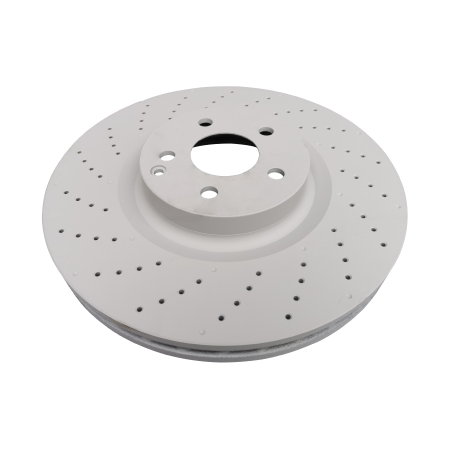Сборки ступиц колес играют жизненно важную роль в производительности и безопасности вашего автомобиля. Они обеспечивают плавное вращение колес, что напрямую влияет на стабильность и эффективность торможения. Эти сборки также поддерживают вес вашего автомобиля, помогая поддерживать баланс во время вождения. Улучшая управляемость и уменьшая износ других компонентов, они способствуют лучшей топливной эффективности. Правильно функционирующие сборки ступиц колес не только улучшают ваш опыт вождения, но и предотвращают аварии, поддерживая контроль и стабильность. Регулярное обслуживание этих компонентов необходимо для того, чтобы ваш автомобиль был безопасным и надежным на дороге.
Понимание сборок ступиц колес
Определение и компоненты
Сборки ступиц колес являются важными частями колесной системы вашего автомобиля. Они соединяют колеса с подвеской, позволяя плавное вращение и поддерживая вес автомобиля. Эти сборки состоят из нескольких ключевых компонентов:
Ступица: Центральная часть, которая удерживает колесо на месте.
Подшипники: Они уменьшают трение и обеспечивают плавное движение колес.
Болты колес: Они фиксируют колесо на ступице.
Датчик ABS (в современных автомобилях): Он контролирует скорость колес и помогает при торможении.
Каждый компонент работает вместе, чтобы поддерживать стабильность, улучшать управляемость и обеспечивать безопасное вождение. Без правильно функционирующего узла ступицы колеса производительность и безопасность вашего автомобиля могут быть под угрозой.
Как работают узлы ступицы колеса в автомобиле
Узлы ступицы колеса играют критическую роль в работе вашего автомобиля. Они позволяют колесам свободно вращаться, поддерживая вес автомобиля. Когда вы едете, подшипники внутри узла уменьшают трение, обеспечивая плавное и эффективное движение колес. Это помогает поддерживать стабильность и улучшает качество езды.
В современных автомобилях датчик ABS, интегрированный в сборку, улучшает эффективность торможения. Он контролирует скорость каждого колеса и взаимодействует с тормозной системой, чтобы предотвратить скольжение при резких остановках. Кроме того, сборка поддерживает выравнивание колес с подвеской, что жизненно важно для правильного управления и контроля.
Понимая, как функционируют сборки ступиц колес, вы можете оценить их важность для поддержания производительности и безопасности вашего автомобиля.
Влияние сборок ступиц колес на производительность автомобиля
Улучшение управляемости и стабильности
Сборки ступиц колес играют решающую роль в улучшении управляемости и стабильности вашего автомобиля. Они обеспечивают надежное соединение колес с системой подвески, что помогает поддерживать правильное выравнивание. Это выравнивание необходимо для плавного рулевого управления и точного контроля, особенно во время резких поворотов или внезапных маневров.
Когда колеса вращаются свободно и без сопротивления, ваш автомобиль более эффективно реагирует на ваши действия. Это улучшает вашу способность справляться с различными дорожными условиями, будь то движение по автомагистралям, неровной местности или мокрым поверхностям. Правильно функционирующие узлы ступиц колес также уменьшают вибрации и покачивания, что в противном случае может ухудшить ваш опыт вождения и безопасность.
Поддерживая вес вашего автомобиля и равномерно распределяя его по всем колесам, эти узлы помогают поддерживать баланс. Этот баланс минимизирует риск потери контроля, особенно при перевозке тяжелых грузов или движении на высоких скоростях. С надежными узлами ступиц колес вы можете наслаждаться более плавной и безопасной поездкой.
Улучшение топливной эффективности и качества поездки
Сборки ступиц колес значительно способствуют топливной эффективности вашего автомобиля. Когда подшипники внутри сборки уменьшают трение, колеса вращаются более легко. Это снижение сопротивления означает, что вашему двигателю не нужно так сильно работать, чтобы поддерживать движение автомобиля. В результате расходуется меньше топлива, что может сэкономить вам деньги со временем.
В дополнение к топливной эффективности, эти сборки улучшают качество езды. Они поглощают и распределяют силы, возникающие из-за неровностей дороги, таких как ямы или выбоины. Это поглощение уменьшает удар, ощущаемый внутри кабины, обеспечивая вам более комфортный опыт вождения.
Хорошо обслуживаемая сборка ступиц колес также предотвращает неравномерный износ шин. Равномерный износ шин обеспечивает постоянное сцепление и стабильность, что дополнительно улучшает качество езды. Поддерживая эти компоненты в хорошем состоянии, вы можете максимизировать как производительность вашего автомобиля, так и общее удовлетворение от вождения.
Роль сборок ступиц колес в безопасности автомобиля
Поддержка стабильности и предотвращение аварий
Сборки ступиц колес играют критическую роль в поддержании стабильности вашего автомобиля на дороге. Они обеспечивают надежное крепление ваших колес к системе подвески, что помогает поддерживать правильное выравнивание. Это выравнивание имеет решающее значение для предотвращения отклонения вашего автомобиля от курса, особенно во время резких поворотов или внезапных маневров. Поддерживая вес вашего автомобиля равномерно, эти сборки снижают риск потери контроля, даже при движении на высокой скорости или при перевозке тяжелых грузов.
Когда ваши колеса вращаются плавно и остаются в выравнивании, ваш автомобиль предсказуемо реагирует на ваши команды рулевого управления. Эта предсказуемость повышает вашу способность избегать потенциальных опасностей, таких как препятствия или резкие остановки. Правильно функционирующий узел ступицы колеса минимизирует вибрации и колебания, которые в противном случае могут подорвать ваш контроль над автомобилем. Поддерживая стабильность, эти компоненты значительно снижают вероятность аварий, обеспечивая более безопасное вождение для вас и ваших пассажиров.
Интеграция с тормозными системами
Современные узлы ступицы колеса часто включают интегрированный датчик ABS (антиблокировочная тормозная система). Этот датчик отслеживает скорость каждого колеса и взаимодействует с тормозной системой вашего автомобиля. Когда вы резко тормозите, датчик ABS обеспечивает то, чтобы ваши колеса не заблокировались, предотвращая скольжение и поддерживая сцепление. Эта функция особенно ценна на скользких или неровных поверхностях, где потеря контроля может привести к опасным ситуациям.
Интеграция узлов ступиц колес с тормозными системами также улучшает тормозную силу. Обеспечивая выравнивание и стабильность ваших колес, эти узлы позволяют вашим тормозам работать более эффективно. Это выравнивание обеспечивает равномерное распределение давления по всем колесам, уменьшая тормозные расстояния и повышая общую эффективность торможения. С хорошо обслуживаемыми узлами ступиц колес вы можете рассчитывать на то, что тормозная система вашего автомобиля будет реагировать быстро и эффективно в критические моменты.
Определение признаков неисправности узла ступицы колеса и связанных с этим рисков
Общие признаки неисправности
Признание признаков неисправного узла ступицы колеса может помочь вам решить проблемы до того, как они усугубятся. Обратите внимание на эти общие индикаторы:
Необычные звуки: Скрежет, гудение или щелчки, исходящие от ваших колес, часто сигнализируют о изношенных подшипниках внутри узла. Эти звуки, как правило, становятся громче по мере ускорения или поворота.
Вибрации в рулевом колесе: Если вы чувствуете вибрации во время вождения, особенно на высоких скоростях, это может означать, что сборка ступицы колеса повреждена или неправильно выровнена.
Неровный износ шин: Когда сборка выходит из строя, это может привести к неправильному выравниванию колес, что приводит к неравномерному износу ваших шин. Это снижает сцепление и сокращает срок службы шин.
Сигнализация ABS: В современных автомобилях неисправный датчик ABS в сборке может вызвать загорание сигнала ABS на вашей приборной панели.
Свободные или шаткие колеса: Неисправная сборка может привести к тому, что колеса будут казаться свободными или шаткими, что компрометирует стабильность и управление.
Если вы заметили какие-либо из этих симптомов, действуйте быстро. Игнорирование их может привести к более серьезным проблемам, которые повлияют на производительность и безопасность вашего автомобиля.
риски пренебрежения техническим обслуживанием
Пренебрежение обслуживанием сборок ступиц колес может привести к серьезным последствиям. Вот потенциальные риски:
Сниженная управляемость и контроль: Поврежденная сборка влияет на выравнивание колес, что затрудняет управление и поддержание контроля, особенно во время резких поворотов или экстренных маневров.
Увеличение тормозного пути: Неисправный датчик ABS или неправильно выровненные колеса могут снизить эффективность торможения, увеличивая время и расстояние, необходимое для остановки вашего автомобиля.
Повреждение шин: Неровный износ шин, вызванный неисправной сборкой, не только снижает сцепление, но и увеличивает риск разрыва, особенно на высоких скоростях.
Аварии: Скомпрометированная стабильность и контроль повышают вероятность аварий, ставя под угрозу вас, ваших пассажиров и других участников дорожного движения.
Дорогие ремонты: Игнорирование мелких проблем может привести к серьезным повреждениям других компонентов, таких как подвеска или тормозная система, что приведет к дорогим ремонтам.
Регулярные проверки и своевременные действия могут предотвратить эти риски. Устраняя проблемы на ранней стадии, вы обеспечиваете безопасность, надежность и эффективность вашего автомобиля.
Обслуживание и замена сборок ступиц колес
Регулярные проверки и практики обслуживания
Регулярные проверки ваших узлов ступиц колес помогают вам рано выявлять потенциальные проблемы. Начните с проверки на необычные звуки, такие как скрежет или гудение, во время вождения. Эти звуки часто указывают на изношенные подшипники. Обратите внимание на вибрации в рулевом колесе, особенно на высоких скоростях, так как они могут сигнализировать о неправильной регулировке или повреждении.
Проверьте свои шины на наличие неравномерного износа. Неравномерный износ часто указывает на проблемы с выравниванием, вызванные неисправным узлом. Обратите внимание на любые предупреждающие огни ABS на вашей приборной панели. Эти огни могут указывать на неисправный датчик ABS в узле. Кроме того, проверьте колеса на наличие люфта или колебаний, что компрометирует стабильность и безопасность.
Регулярное обслуживание включает в себя очистку узлов от грязи и мусора, которые могут повлиять на производительность. Смазывайте подшипники, если ваш автомобиль использует обслуживаемые. Следуйте рекомендациям производителя вашего автомобиля по интервалам обслуживания. Проактивный подход к этим практикам гарантирует, что ваши узлы останутся в хорошем состоянии, снижая риск дорогостоящего ремонта.
Когда и как заменить сборку ступицы колеса
Замена сборки ступицы колеса становится необходимой, когда она показывает признаки неисправности. Если вы слышите постоянные скрипящие звуки, чувствуете чрезмерные вибрации или замечаете расшатанные колеса, замена, вероятно, потребуется. Игнорирование этих симптомов может привести к дальнейшему повреждению и небезопасным условиям вождения.
Чтобы заменить сборку ступицы колеса, выполните следующие шаги:
Подготовьте свои инструменты и рабочее пространство: соберите домкрат, ключ для гаек, набор головок и динамометрический ключ. Убедитесь, что ваш автомобиль стоит на ровной поверхности.
Поднимите транспортное средство: Используйте домкрат, чтобы поднять транспортное средство и зафиксируйте его с помощью подставок под домкрат. Снимите колесо с помощью гаечного ключа.
Снимите старую сборку: Отсоедините тормозной суппорт и ротор, чтобы получить доступ к сборке ступицы. Открутите сборку от подвески и отключите датчик ABS, если он есть.
Установите новую сборку: Совместите новую сборку ступицы с подвеской и закрепите ее болтами. Подключите датчик ABS и снова прикрепите тормозные компоненты.
Установите колесо на место: Установите колесо обратно на ступицу и затяните гайки. Опустите транспортное средство и используйте динамометрический ключ, чтобы убедиться в правильной затяжке гаек.
Если у вас нет опыта или инструментов, проконсультируйтесь с профессиональным механиком. Правильная установка имеет решающее значение для безопасности и производительности. Своевременная замена неисправной сборки предотвращает дальнейшие повреждения и обеспечивает плавную работу вашего транспортного средства.
Сборки ступиц колес играют решающую роль в производительности и безопасности вашего автомобиля. Они напрямую влияют на управляемость, стабильность и эффективность торможения, обеспечивая плавный и контролируемый опыт вождения. Регулярное обслуживание помогает избежать дорогостоящих ремонтов и поддерживает надежность вашего автомобиля на дороге. Своевременная замена неисправных сборок предотвращает дальнейшие повреждения и повышает безопасность. Приоритизация их обслуживания обеспечивает оптимальную функциональность и продлевает срок службы вашего автомобиля. Оставаясь проактивным, вы поддерживаете не только производительность вашего автомобиля, но и спокойствие во время вождения.
 EN
EN
 AR
AR
 FR
FR
 KO
KO
 PT
PT
 RU
RU
 ES
ES


